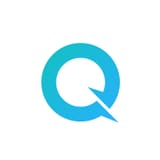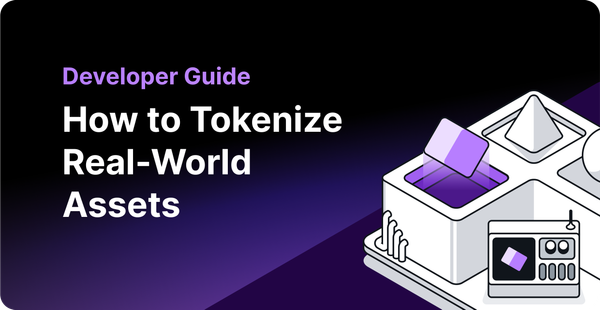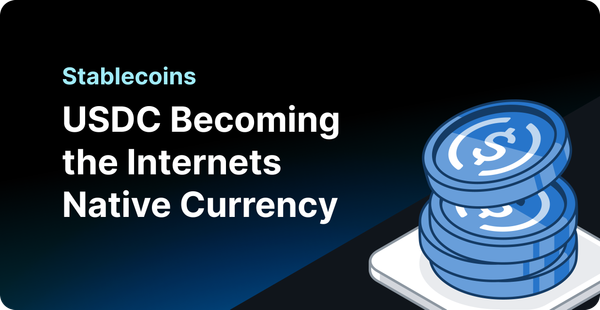Ethereum Holesky: All You Need to Know and How to Use It
Ethereum has launched its new Holesky testnet, replacing Goerli, to provide enhanced testing capabilities for its growing developer community and complex infrastructure.

Ethereum is undoubtedly the hub for the majority of decentralized applications (dApps), but not without hurdles. The on-chain congestion, coupled with the high gas costs are not helping dapps in being a smooth experience for users. Similarly, the congestion is also hurting the developers.
How?
Ethereum addresses these challenges by essentially replicating its core features on fee-free and testing-focused blockchains. This is where developers can fine-tune their apps before launching them on the primary Ethereum network.
Recently, Ethereum has replaced its popular testing environment, Goerli, with Holesky, a new and improved testnet. Holesky offers a robust foundation for staking, infrastructure enhancements, and groundbreaking protocol developments, addressing the evolving needs of Ethereum's testing infrastructure.
In this article, we will dive into what Holesky is, understand the reasons behind the replacement of Goerli, and explore how to use this new testnet of the Ethereum blockchain.
Holesky and its features
Holesky is Ethereum’s public testnet that serves as a technical experimentation platform for Ethereum's infrastructure, staking designs, and protocol-level developments. This testing environment brings its own set of validators, a dedicated block explorer, and an ecosystem of faucets.
Named after Prague's Nádraží Holešovice subway station, the testnet was scheduled to launch on Sep 15, 2023, to coincide with Ethereum's first anniversary of transitioning from proof-of-work (PoW) to proof-of-stake (PoS) consensus. However, a configuration error led to a brief delay, and the testnet eventually went live on September 28, 2023.
Additionally, Holesky introduces several new features that position it as a critical testing environment for Ethereum's future development:
Increased validator capacity
Holesky is designed to support 1.4 million validators. This capacity surpasses the combined number of validators on Ethereum's mainnet (862,895) and the previous Goerli testnet (512,000).
This expanded validator set allows developers and infrastructure providers to conduct tests under more realistic network conditions, reflecting the growing scale and complexity of the Ethereum ecosystem.
Staking mechanism
Similar to Ethereum's mainnet, Holesky offers a staking mechanism. Validators can stake Holesky ETH to participate in validating the new testing network.
Preparation for Dencun
Holesky's role is not limited to standard testing. It plays a vital part in preparations for Ethereum's upcoming major upgrade, Dencun. This upgrade is set to introduce proto-danksharding, a long-anticipated feature aimed at reducing costs for users.
Holesky aims to serve as a testing ground for these innovations, ensuring their smooth integration into the Ethereum ecosystem.
Increased fixed supply
Holesky features a substantially higher fixed supply of testnet tokens compared to its predecessor, Goerli.
This increase in supply aims to prevent the supply issues that Goerli has faced, including shortages of testnet ETH during periods of high demand.
Ethereum has allocated an initial supply of 1.6 billion Holesky testnet ETH, providing a more ample and reliable resource for developers and testers.
Now, why are we talking about Holesky in the first place?
Holesky effectively replaces Goerli, one of Ethereum’s popular testnet and developer playgrounds for many key upgrades. In the next section, let’s delve a little deeper into the ‘Why’ behind Holesky.
Why Holesky replaced Goerli?
Holesky is designed to replace Goerli as the primary testing ground for Ethereum infrastructure and core protocol upgrades. Goerli, the previous testnet, had served this role for several years but faced challenges due to the growing complexity of infrastructure and upgrades within the Ethereum ecosystem.
One significant issue with Goerli was related to its native token, goETH, which is used on the test network to simulate transaction fees without real financial consequences. Goerli had imposed a hard cap on the total supply of goETH.
At one point, goETH was trading for as high as $0.4029, while the faucets struggled to keep up with the soaring demand. This price increase became a significant bottleneck for developers, particularly when the network was undergoing substantial upgrades such as the Ethereum Merge and developments in its proof-of-stake consensus system.
To alleviate the issue of dwindling goETH supply and rising costs for testing, Ethereum developers realized that starting a new testnet, Holesky, with an improved token issuance system was the solution. This fresh start allowed for a more informed approach to designing the network to meet the testing demands of Ethereum's evolving ecosystem while avoiding the limitations faced by Goerli.
How to use the Ethereum Holesky Testnet
To use Holesky, you need Holesky testnet ETH to run transactions on this testnet. You can obtain them for free using a faucet. However, before you can do so, you must add the Holesky testnet network to your wallet.
In this example, we will use MetaMask to add the Holesky testnet to our wallet.
Step 1: Open your MetaMask wallet and click on the "Ethereum Mainnet" drop-down button.
Scroll down and click on "Add network."
Step 2: Click on the "Add network manually" button.
Now, enter details like network name, RPC URL, Holesky chain ID, currency symbol, etc.:
Network name: Holesky Testnet
Network URL: https://ethereum-holesky.publicnode.com
Chain ID: 17000
Currency symbol: ETH
Block explorer URL: https://holesky.beaconcha.in
After adding the details, you should be able to connect to the Holesky testnet:
Now that you've added the Holesky testnet to your wallet, it's time to get some Holesky testnet ETH using QuickNode's faucet.
How to Get Holesky Testnet ETH using QuickNode's Faucet
1. Go to Ethereum Faucet for Holesky by QuickNode
2. You can either connect the wallet or manually enter the wallet address.
3. You can share the post to get 4x of Holesky ETH or click "No thanks, just send me 1 ETH."
4. The transaction usually takes less than a minute to complete.
5. Check in your wallet. You will have received Holesky ETH.
Once you have Holesky ETH in your wallet, you're ready to dive into experimentation and application development on the Holesky testnet.
The future of the Ethereum Holesky testnet
The Ethereum Holesky testnet marks a significant milestone in Ethereum's evolution. Boasting a vast validator capacity, an integrated staking mechanism, and a preparatory phase for the monumental Dencun upgrade, Holesky stands at the forefront of Ethereum's progression.
Holesky is more than a test environment, it's a window into Ethereum's future as the infrastructure for a surreal amount of blockchain-based possibilities.

About QuickNode
QuickNode is building infrastructure to support the future of Web3. Since 2017, we've worked with hundreds of developers and companies, helping scale dApps and providing high-performance access to 25+ blockchains. Subscribe to our newsletter for more content like this, and stay in the loop with what's happening in Web3!





